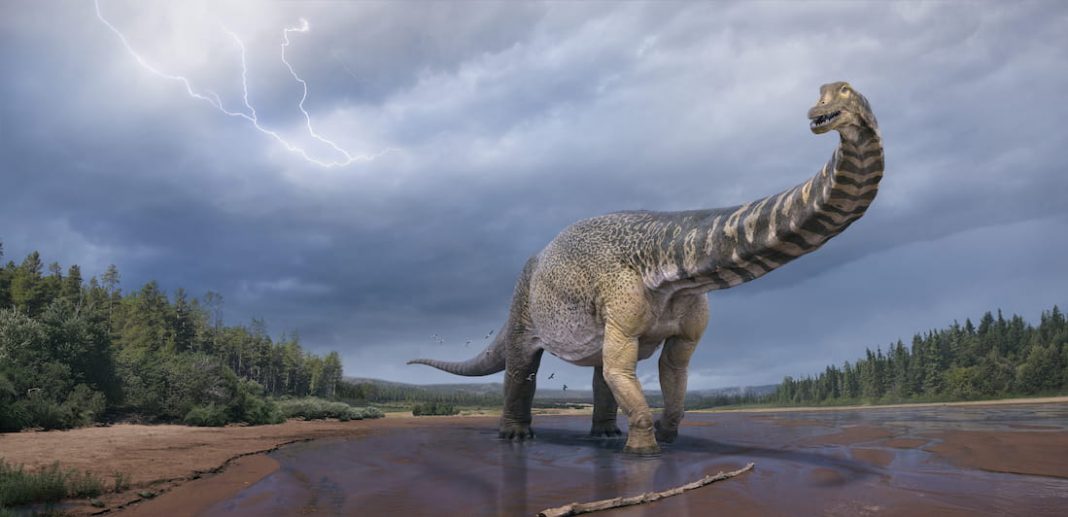A 100-million-year-old dinosaur skull discovered by palaeontologists in outback Queensland has offered a rare glimpse into the animal’s passage through a warmer Antarctica.
The long-necked dinosaur’s skull, belonging to a sauropod nicknamed Ann, was found on Elderslie Station near Winton in 2018 during an annual dinosaur dig.
Curtin University researchers have been analysing the skull to gain a better understanding of the dinosaur’s anatomy, relationships and feeding habits.
The nearly complete skull – the first to be found in Australia – belongs to the species Diamantinasaurus matildae, which is known for having small heads, long necks and tails, barrel-like bodies, and four columnar legs.
Research released on Wednesday revealed analysis of the skull has uncovered the dinosaur’s pathway between South America and Australia through Antarctica between 100 and 95 million years ago.
“The window between 100 and 95 million years ago was one of the warmest in earth’s geologically recent history, meaning that Antarctica, which was more or less where it is now, had no ice,” lead researcher and palaeontologist Stephen Poropat said.
“Similarly, Australia, which was much further south than today, was warmer with less seasonality. In that climate, Antarctica was forested, and might have been an attractive habitat or pathway for wandering sauropods.”
Dr Poropat, one of the palaeontologists who uncovered the skull, said it had similarities to the skull of a South American titanosaur.
“These include details of the brain case, the bones forming the back end of the skull near the jaw joint, and in the shape of the teeth,” he said.
“Our research suggests that Diamantinasaurus was one of the most ‘primitive’ titanosaurs.
“Gaining a better understanding of this species might explain why titanosaurs were so successful, across so much of the world, right until the end of the Age of Dinosaurs.”
Ann is the third fossil specimen of Diamantinasaurus to have been discovered on Elderslie station, and the fourth specimen overall.



